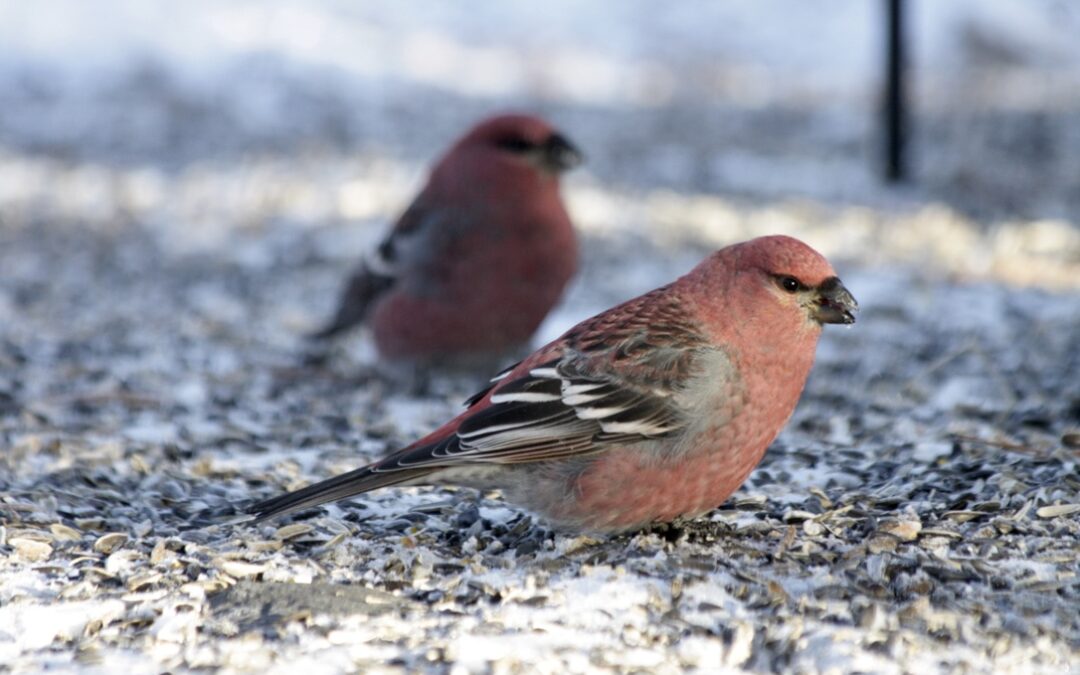
Gorgeous Pine Grosbeaks
The photos above are from near Barrhead, AB, taken on December 29, 2017, using a Canon EOS XS with a Canon EF 70-300 mm f/4-5.6 IS USM telephoto lens.

The photos above are from near Barrhead, AB, taken on December 29, 2017, using a Canon EOS XS with a Canon EF 70-300 mm f/4-5.6 IS USM telephoto lens.
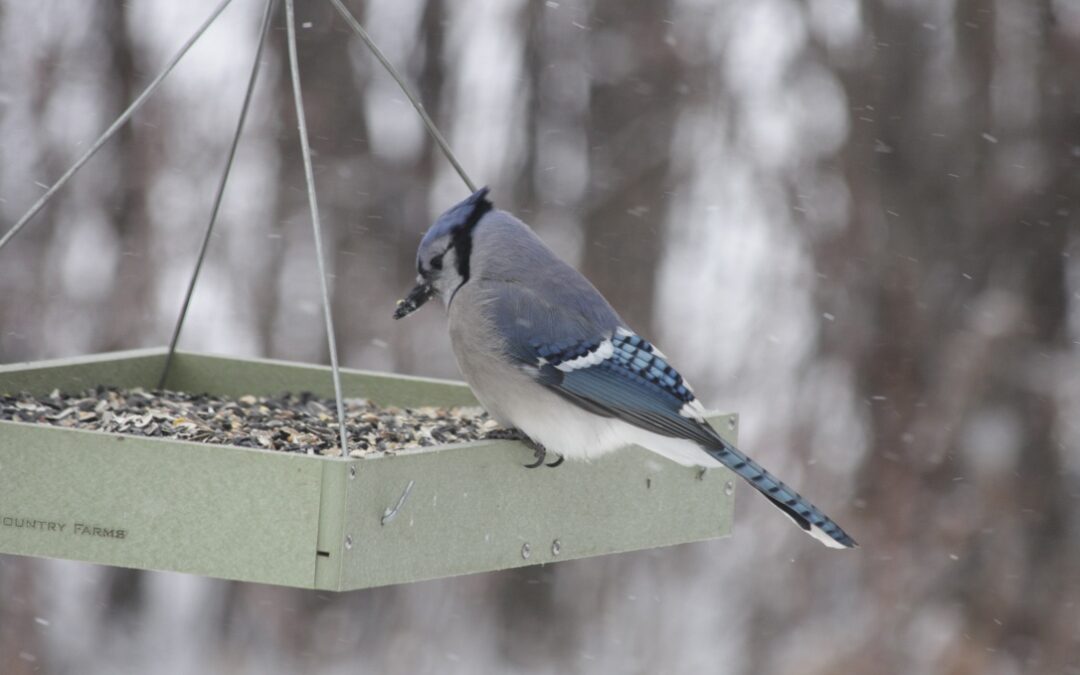

Unfortunately for the chickadees, these bigger birds love to hog the feeders for themselves. Usually one is enough to chase off the rest of the little birds, but when two or more come around, there’s no way a little chickadee will dare grab some seed… unless they can flit in and out to grab a seed they can deal with on a nearby branch.
This was taken on January 14, 2016, near Barrhead, AB, Canada with my old Canon Rebel XS DSLR camera with a Canon EF 70-300 mm f/4-5.6 IS USM telephoto lens.
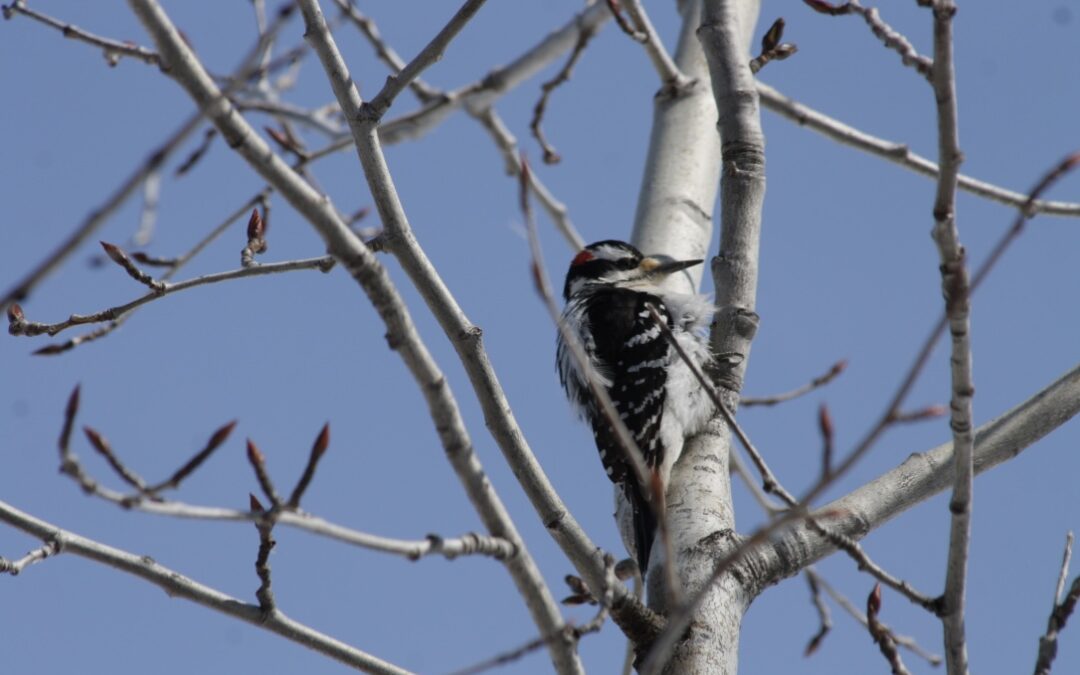
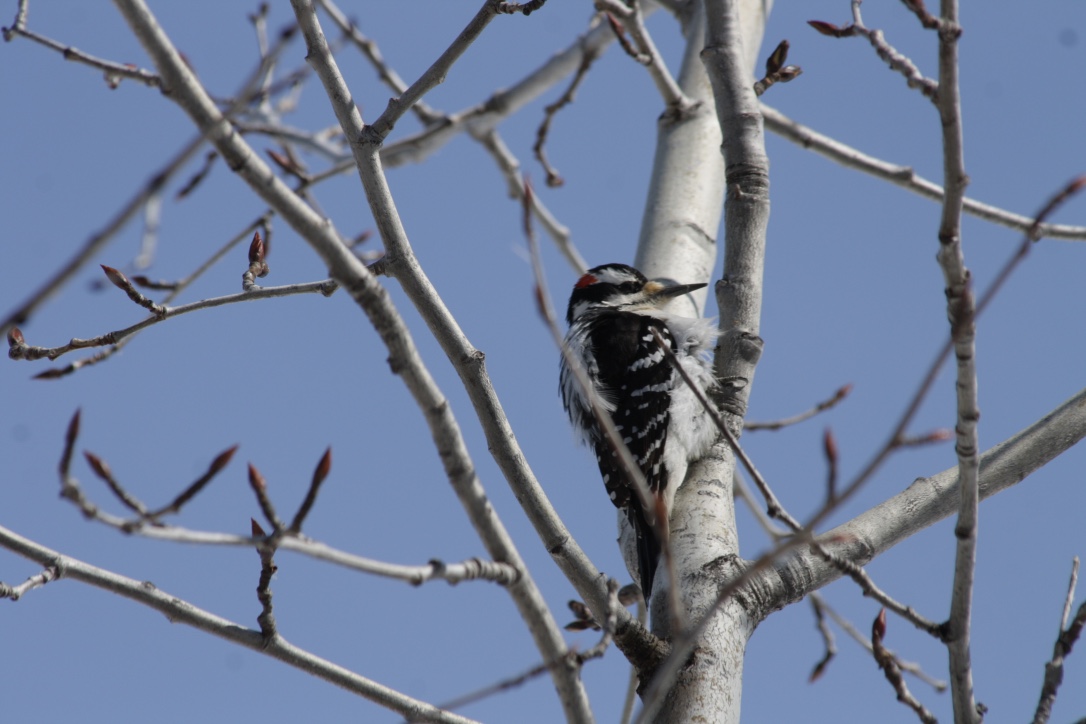
Taken near Barrhead, AB, Canada on April 16, 2017, with my old Canon Rebel XS DSLR camera, with a Canon EF 70-300 mm f/4-5.6 IS USM telephoto lens.
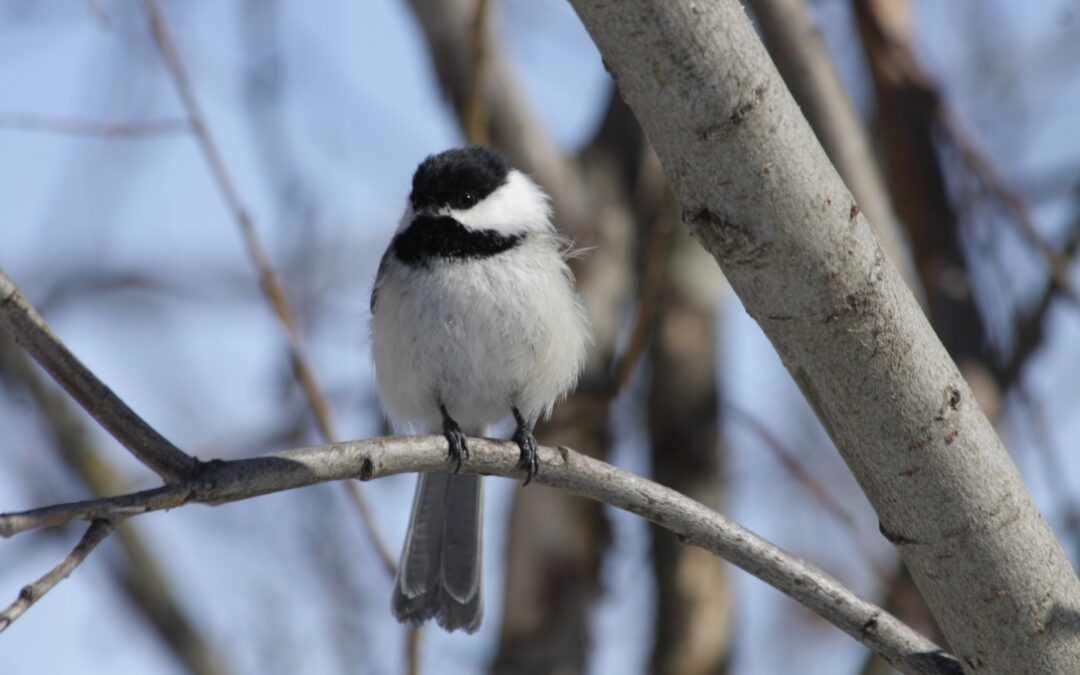
“Chick-a-dee-dee-dee-dee!!”
They cry as I hold my camera steady to at least get a chance of a photo of one of them at the feeder.
These little forest birds are fast; it’s for their own survival, they don’t like staying in one place for too long, unlike the red polls that love to sit in the feeder tray and stuff themselves.
Chickadees? They’re quite fun to watch. One will fly to a feeder, pick out just one sunflower seed, fly back to their favourite perch, then place that seed between their toes and start hammering at it almost like a woodpecker to get at the tasty morsel inside. (I promise I will post photos of that activity… when I get them!)
They’re smart too; they know when someone’s coming out to the bird feeder, and it doesn’t take them long to figure out (if a person does it often enough, that is) that the crazy human with that big long black thing they hold up to their face which makes a weird clicking noise isn’t much of a big deal, unlike an owl would be. They’ll even come and perch on your hand to eat straight from your hand if you have the patience to stand out and convince them to do so.
Chickadees that aren’t used to such attention tend to not stick around so close–or so long, as these two beauties did for me–and make life difficult for any amateur photographer who’s yet to learn the patience game. There’s been plenty of times when I snapped the shutter, had a check at the viewfinder and found that the bird had completely vanished! Or I just get a whir of wings at the corner of my shot…
Taken near Barrhead, AB, Canada on April 16, 2017, with my old Canon Rebel XS DSLR camera with a Canon EF 70-300 mm f/4-5.6 IS USM telephoto lens.

Oh my word, when myself and another research assistant, while working at one of the University of Alberta’s ranches, and just going back for lunch, spotted these little guys, we positively swooned, not to mention slammed on the brakes and had to back up to catch a photo of these cute fluff-balls hanging out in the irrigation canals (next to the road we were driving on).
These are just three out of six that were grouped together on this algae mass. No doubt their parents weren’t too far away, scared off by the big white truck we were driving, but sure to come back soon after we left.
Taken on the Mattheis Research Ranch (University of Alberta’s Rangeland Research Institute) near Brooks, AB, Canada on June 17, 2014, with my old Canon Rebel XS DSLR camera with a Canon EF 70-300 mm f/4-5.6 IS USM telephoto lens.
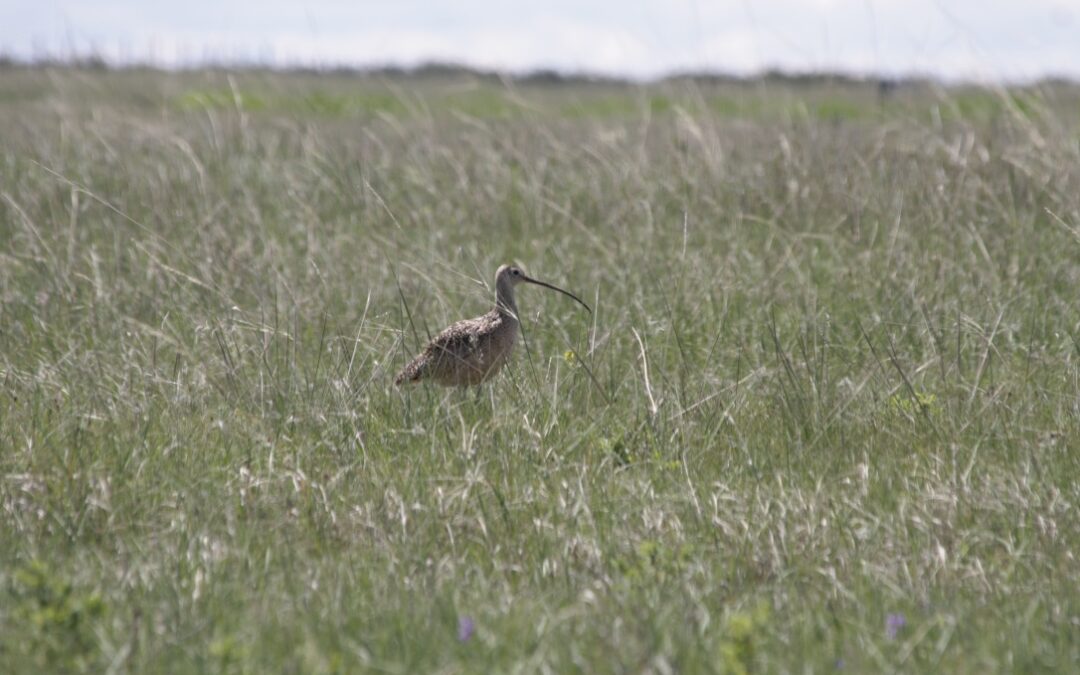
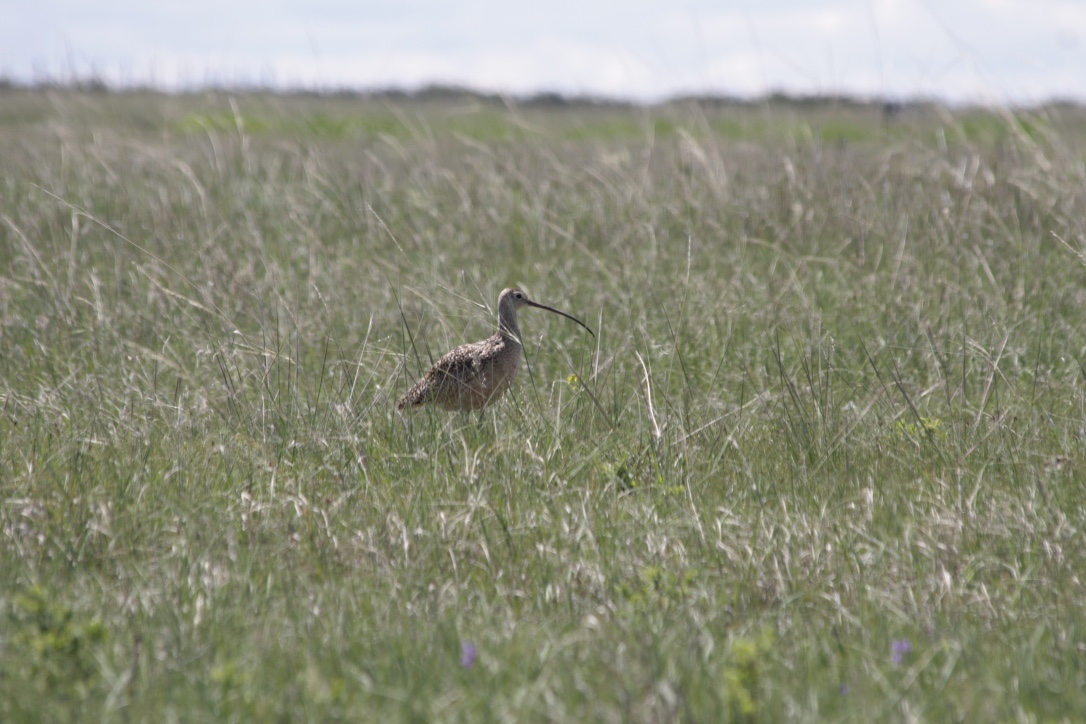
The prairies are a very important habitat for nesting birds, including shorebirds such as this Long-billed Curlew, which is an endangered species.
While myself and a grad student were busy working in the field at the Rangeland Research Ranch near Brooks, Alberta, these birds were sure raising a little bit of a ruckus and worried about what we’d be doing to their little ones. Of course, the fieldwork we were doing was more to do with plants than these birds, but it was hard to ignore them. Especially when I had my Canon Rebel with a telephoto lens, and a dare to carefully get as close to them as I could without frightening them off.
Taken on the Mattheis Research Ranch (University of Alberta’s Rangeland Research Institute) near Brooks, AB, Canada on June 19, 2014, with my old Canon Rebel XS DSLR camera with a Canon EF 70-300 mm f/4-5.6 IS USM telephoto lens.